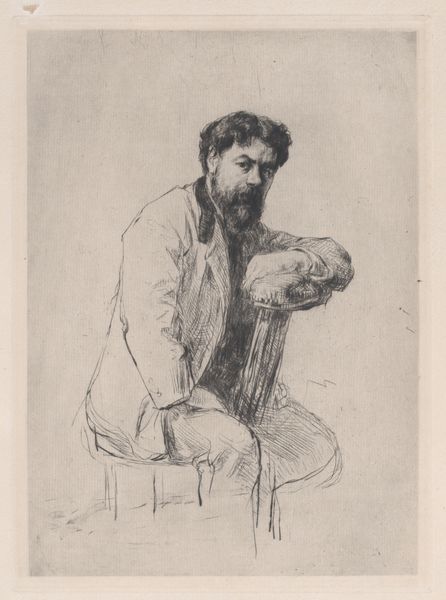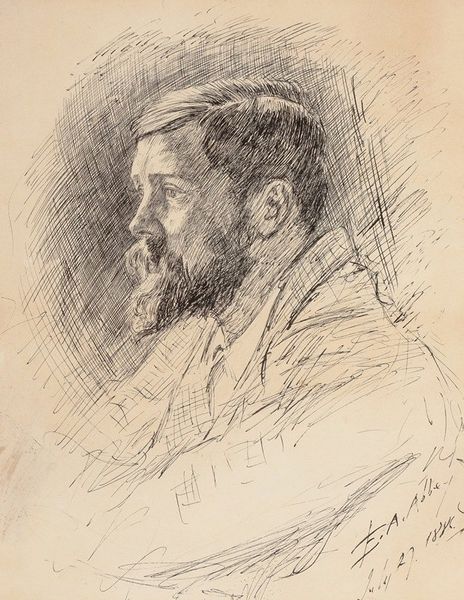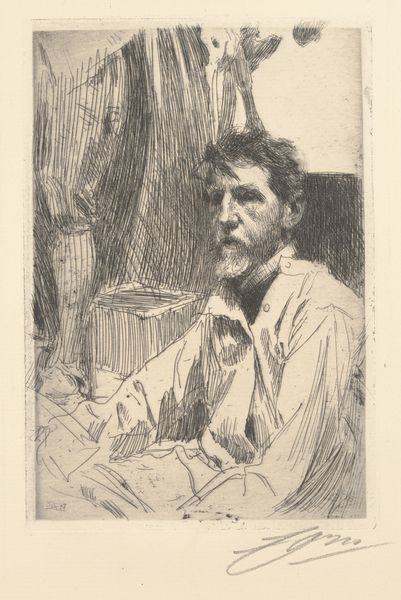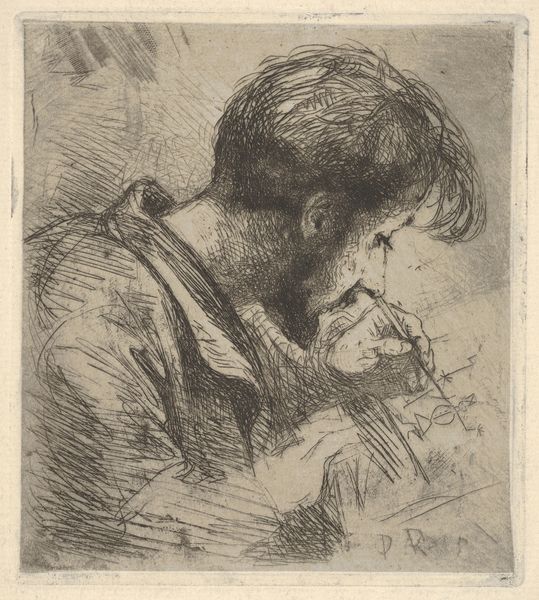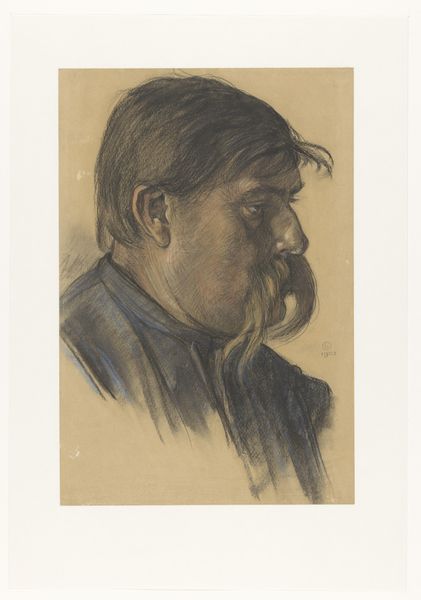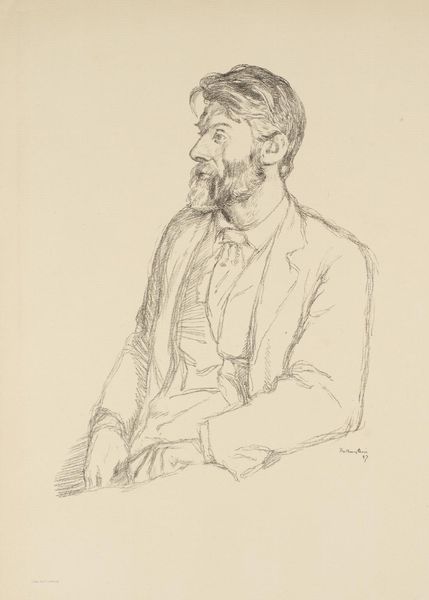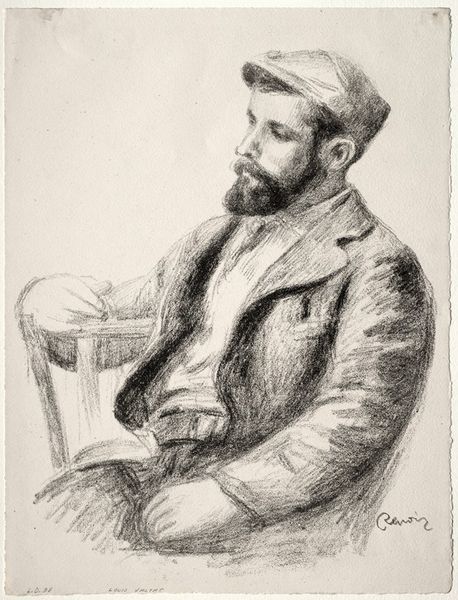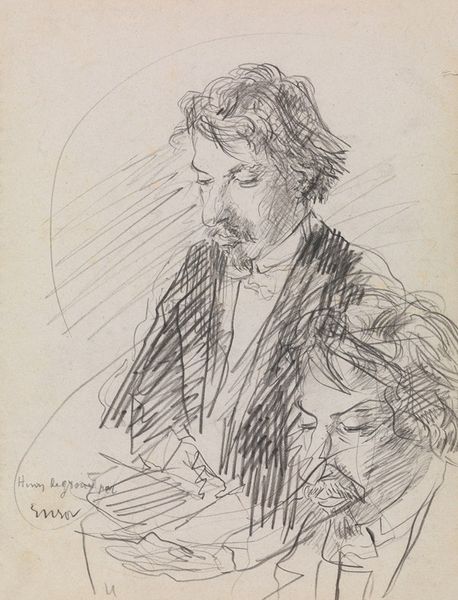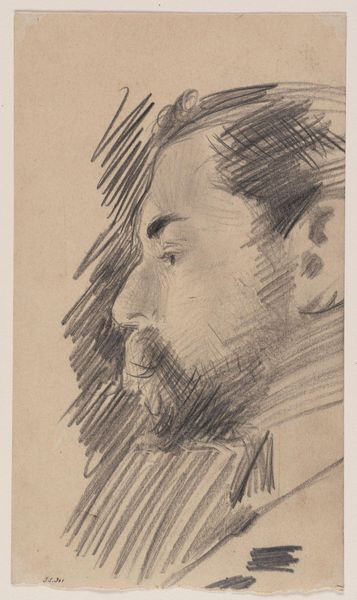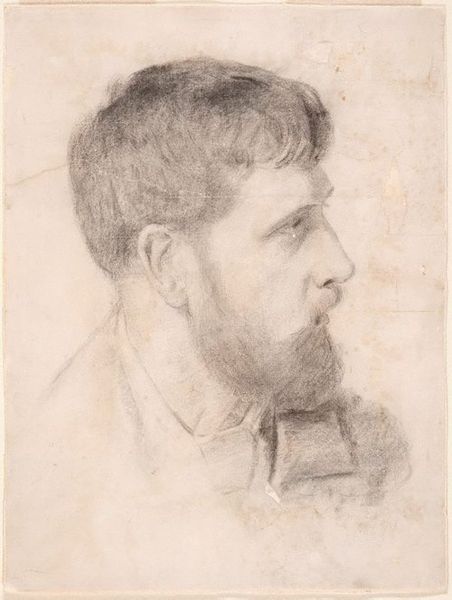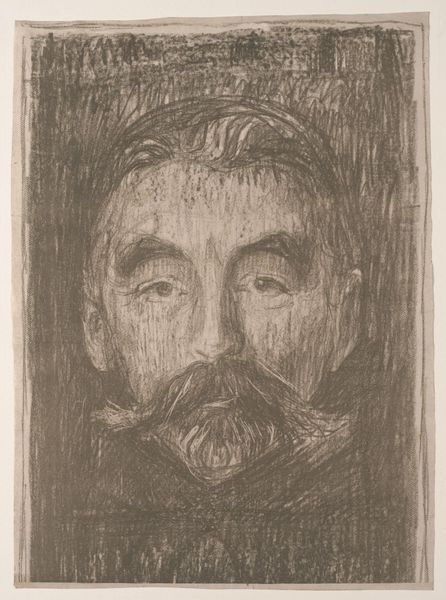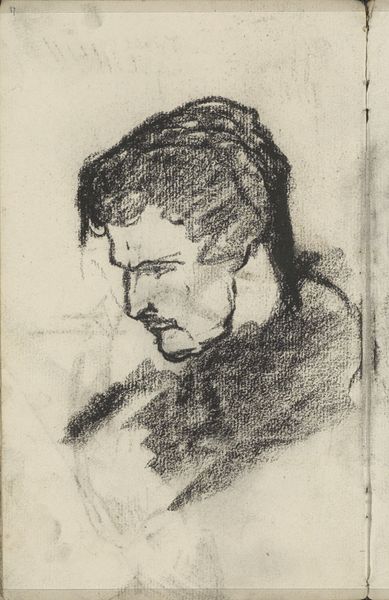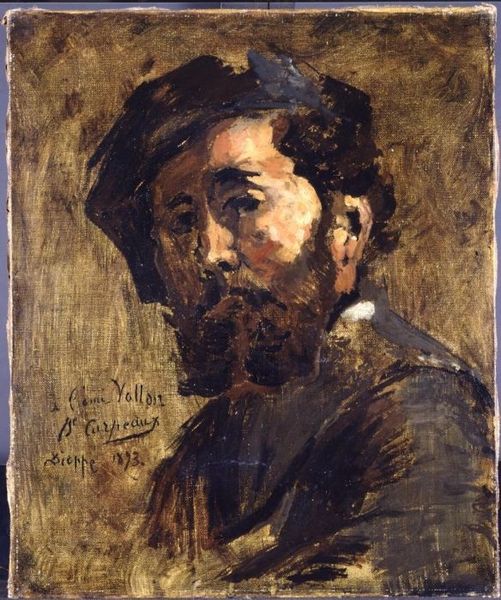
drawing, charcoal
#
portrait
#
drawing
#
art-nouveau
#
symbolism
#
portrait drawing
#
charcoal
Copyright: Public Domain: Artvee
Editor: Here we have Ramón Casas’s charcoal drawing, "Portrait of Santiago Rusiñol," created around 1900. It feels very intimate, like a candid snapshot. What strikes me is how casually Rusiñol is depicted, smoking his pipe. What can you tell me about it? Curator: It's interesting that you perceive a sense of casual intimacy. Consider this work within the cultural landscape of Catalonia at the turn of the century. Rusiñol wasn't just any smoker; he was a key figure in the Modernista movement, and Casas, portraying him here, wasn't simply capturing a likeness, but a symbol. Editor: A symbol of what, exactly? The Modernista movement? Curator: Exactly. The Modernistas embraced bohemianism and challenged bourgeois norms. The pipe, the somewhat disheveled hair, even the medium of charcoal itself – less formal than oil paint – all speak to a rejection of tradition. This image became an emblem of artistic rebellion and intellectual freedom in a society undergoing rapid change. Editor: So, you're saying that this portrait is not just about the individual, but also a statement about their shared values? Curator: Precisely. Think about it. Who were the patrons, and who was being intentionally left out? And to what extent did they intentionally invite conversation with this depiction of Catalonian values? And how were gender roles being challenged or maintained within these artistic circles? What power did Rusiñol yield as a cultural influencer and were Casas's depictions like these supporting his authority and social mobility? Editor: That gives me a lot to think about. I was just seeing a portrait, but now I recognize the work's statement and potential political elements within its community. Thanks for offering your insight. Curator: My pleasure. The beauty of art lies in its ability to ignite social commentary. By questioning art and societal movements such as this, we start questioning everything.
Comments
No comments
Be the first to comment and join the conversation on the ultimate creative platform.
